If there’s one thing I’ll usually not hesitate to use Qantas Points on, it’s Business Class flights within Asia. Despite flight times being similar to many domestic routes in Australia, the service standards are at a whole new level.
I know, I know. There are plenty of reasons why there’s a discrepancy in service – international vs. domestic, market forces between two global cities vs. two smaller Australian cities etc. That’s not the point – what I’m saying is that it’s possible to enjoy a stellar Business Class experience for a relatively small chunk of points.
Take a Brisbane-Adelaide flight, for example – a journey that lasts slightly upwards of 150 minutes. You can book it for 27,600 Qantas Points + fees and taxes and chomp on a single-tray meal onboard a narrow-body jet.
My flight from Taipei to Osaka is a similar length. During that blissful 2.5 hours, I indulge in proper lie-flat seating and a lip-smacking Japanese kaiseki course crafted by a renowned Tokyo-based restaurant, TOUTOUAN. For just 2,400 Qantas Points more, I know what I’d rather book!
Here’s what it’s like to soar in the lap of luxury on my connecting China Airlines flight to Osaka.
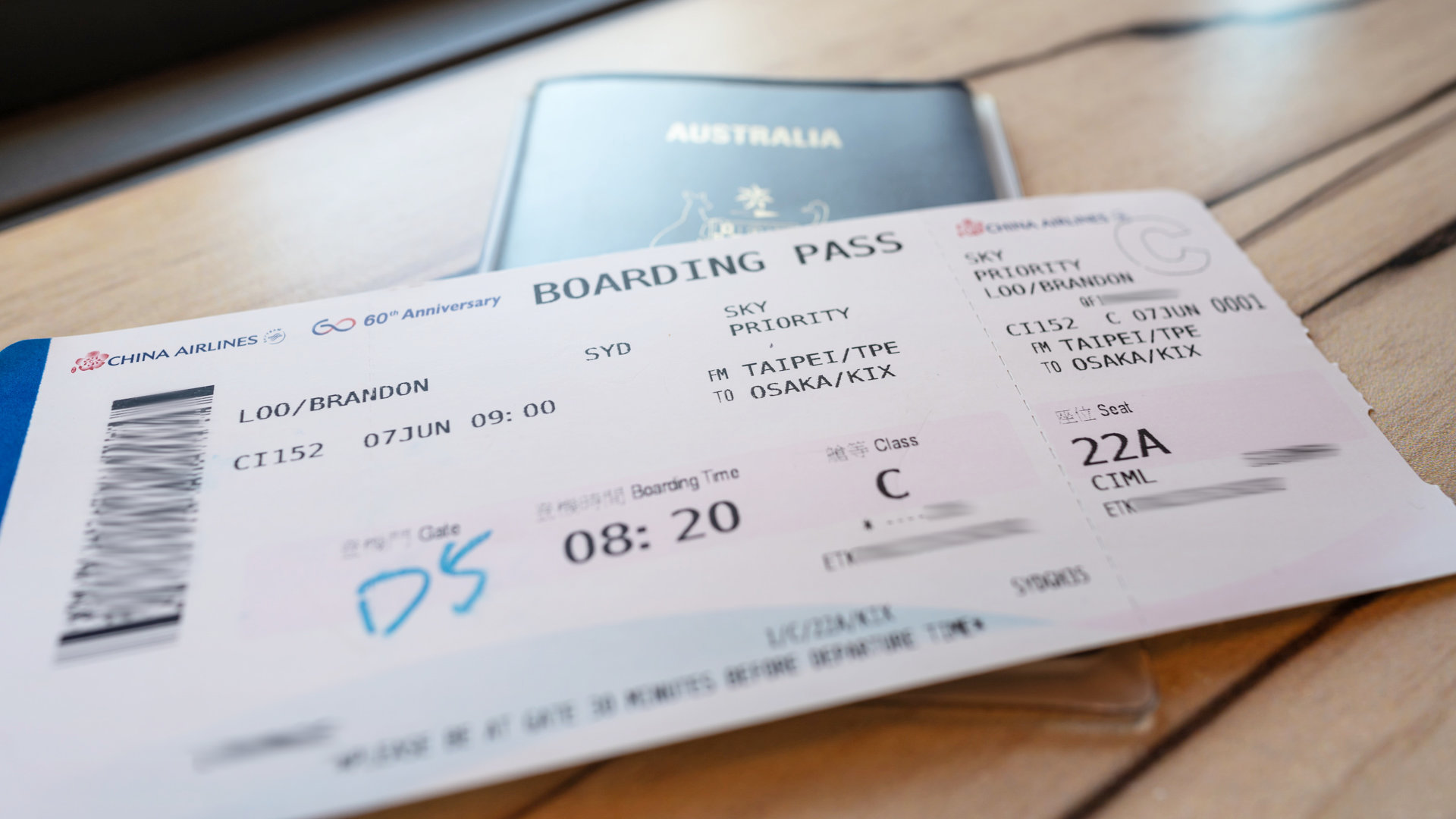
Transfer and lounge in Taipei
After a pleasant overnight flight in China Airlines Airbus A350 Business Class from Sydney, I hop on the transfer train to Terminal 2 to await my next flight. The Dynasty Lounge in T2 isn’t one that sends my pulse racing (though the long walks through transit security certainly do), but I still unwind with a steaming bowl of noodles and an equally steamy shower to freshen up.
Over at the gate, passengers in Business Class get to board early through the ‘Sky Priority’ lane. I seize the opportunity to take a closer look at the gorgeous Boeing 777 shuttling us over to Osaka today.

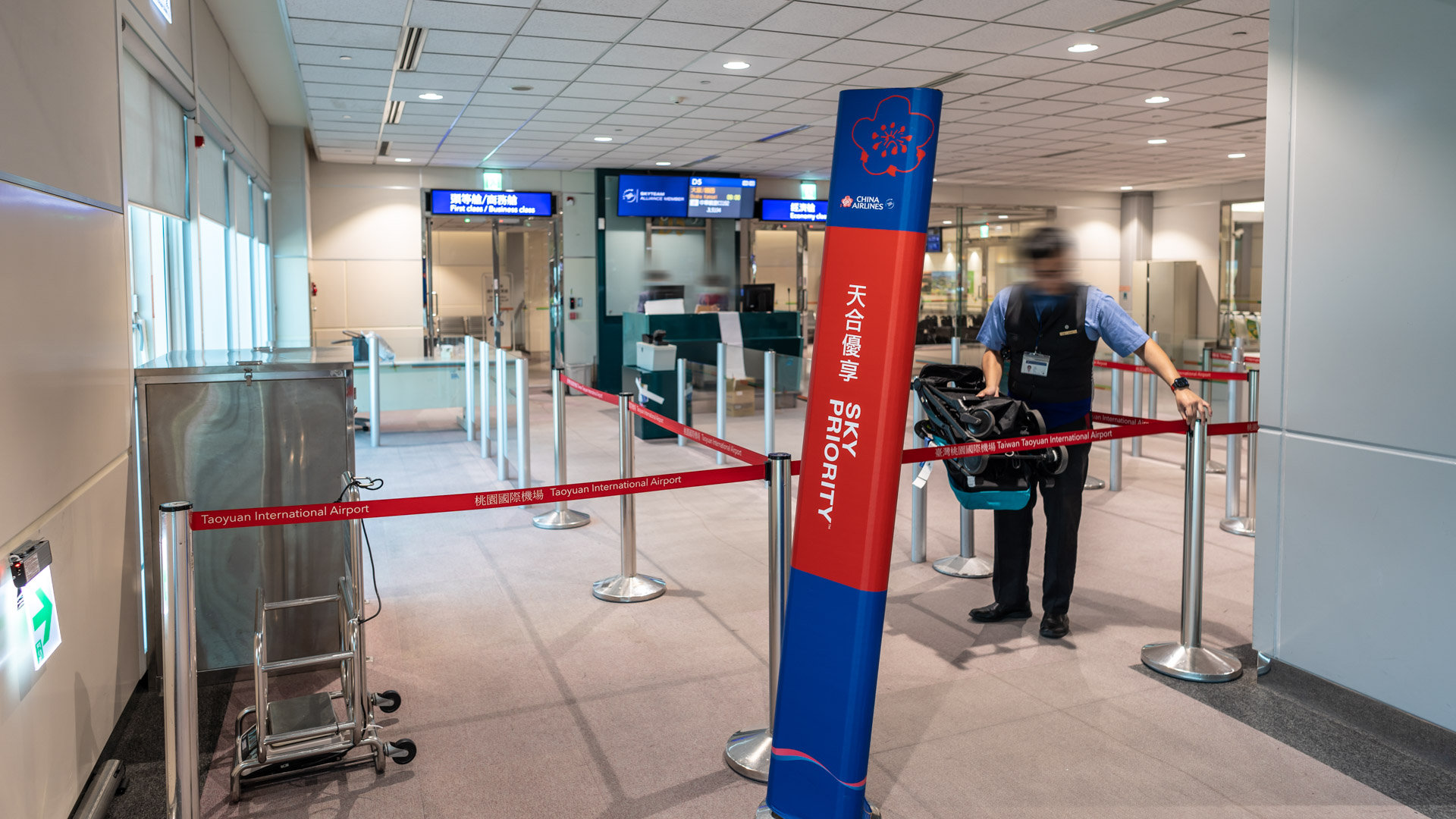
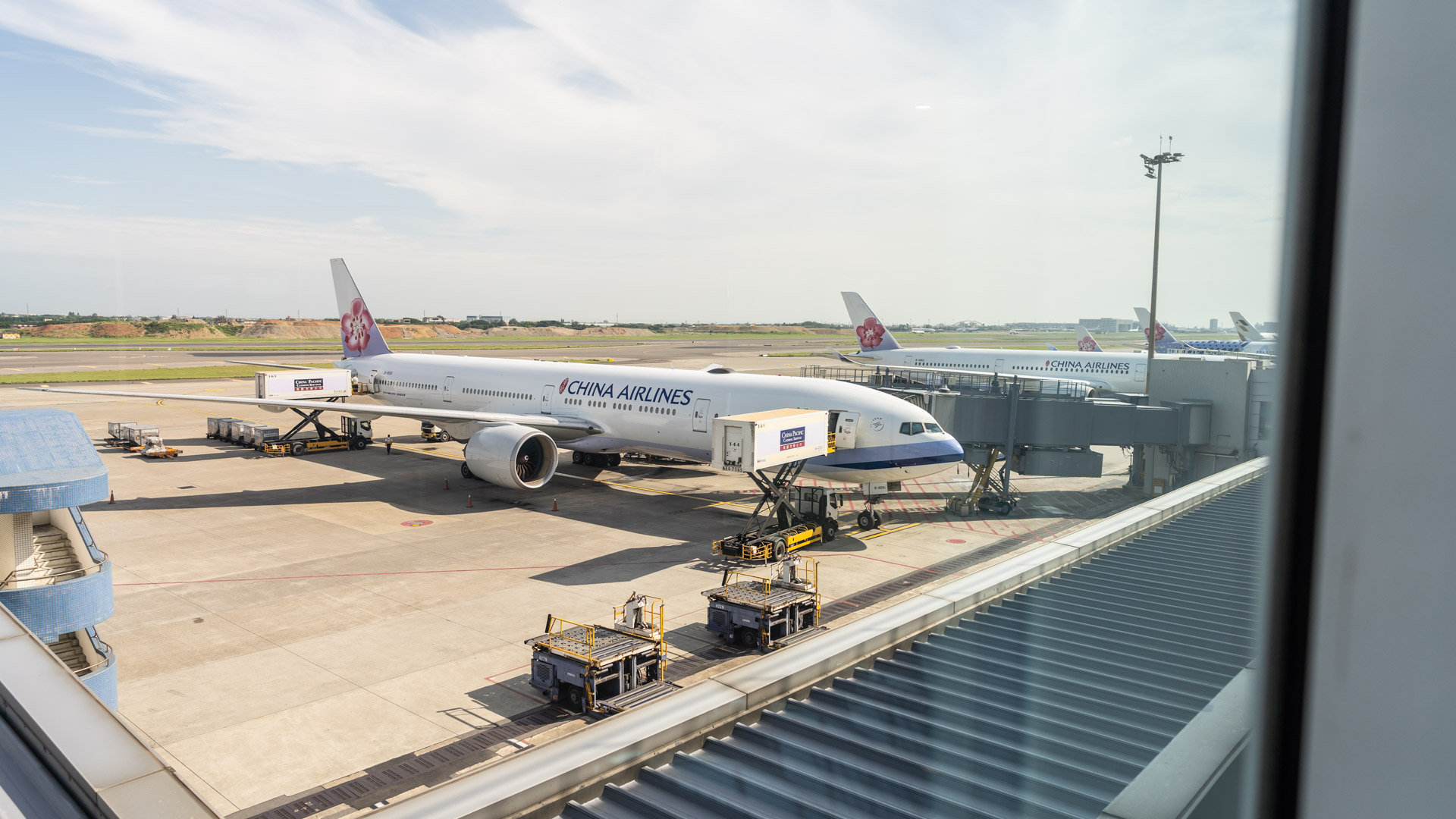
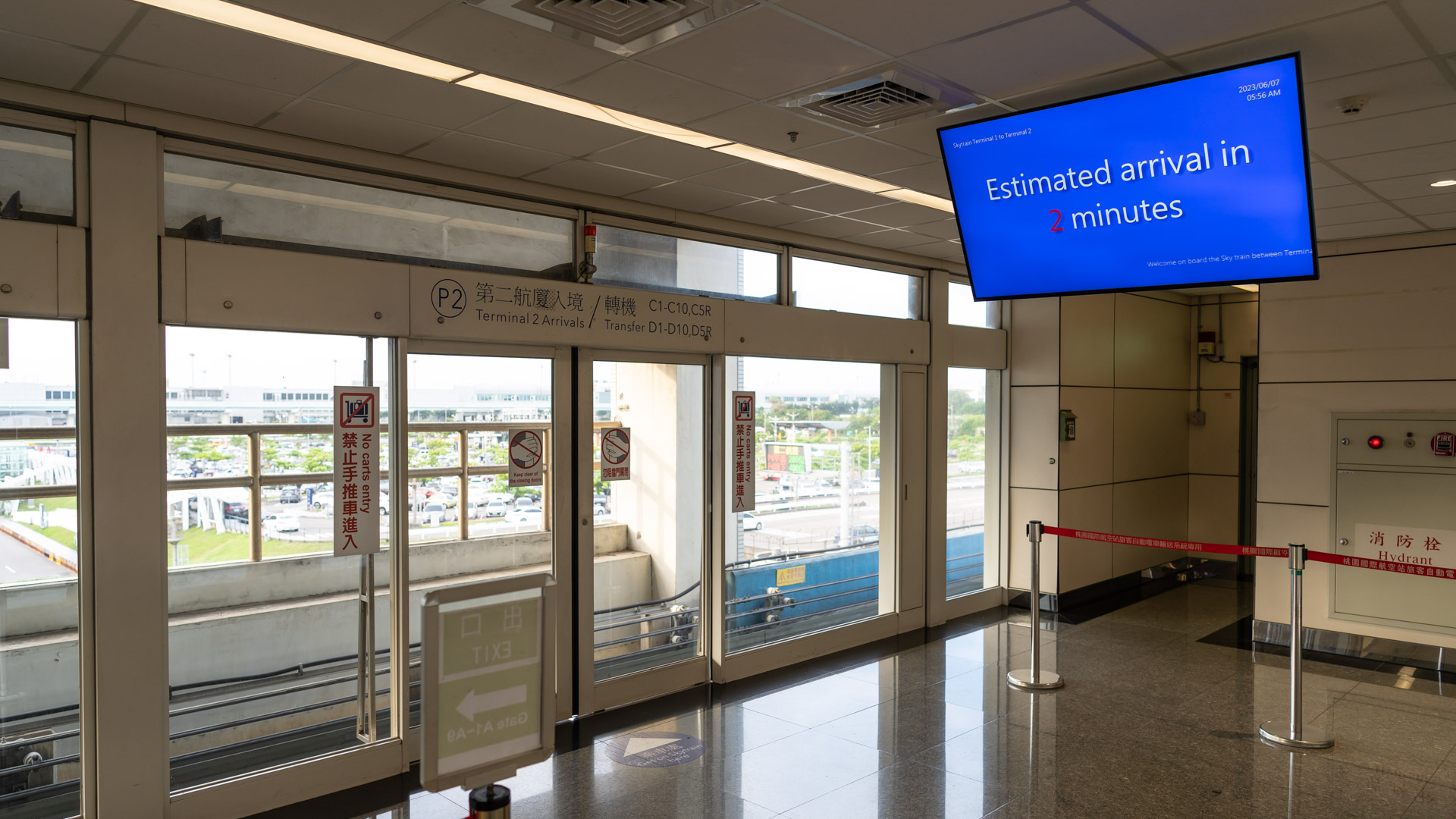
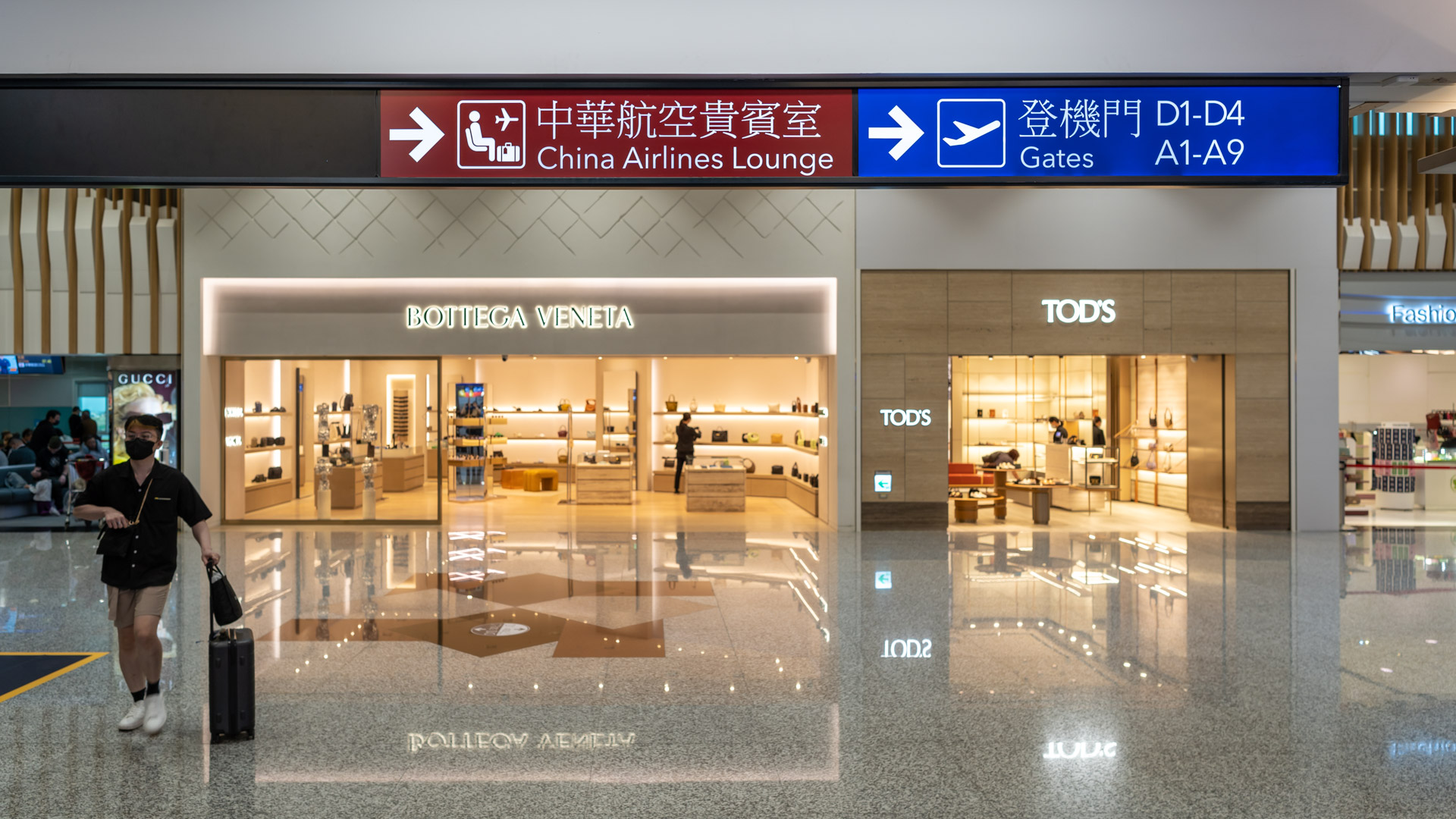

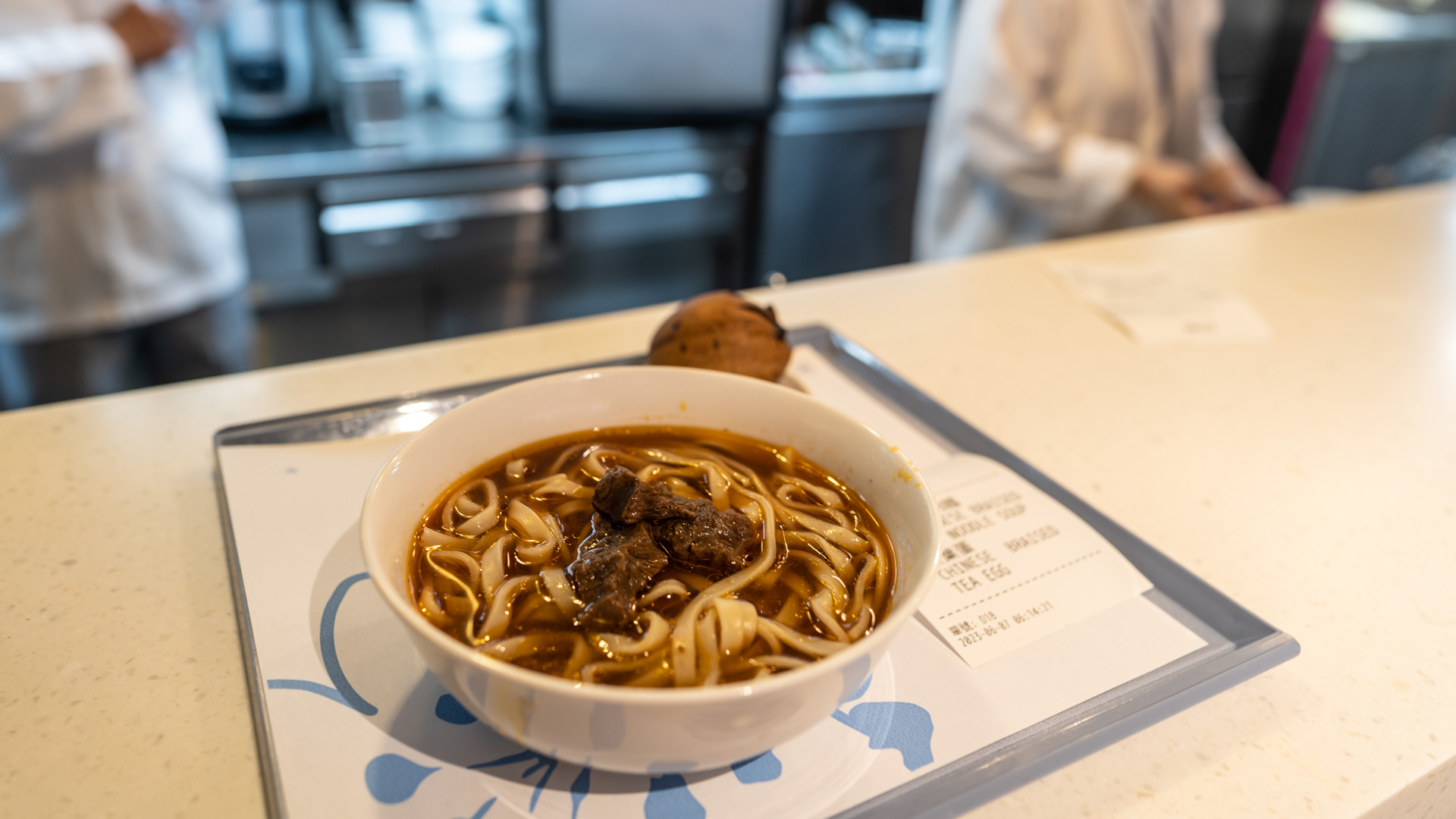
China Airlines Boeing 777 cabin and seats
Moody. That’s the word that instantly comes to mind as I step onboard and turn right. Wondering why I’m not following the adage of ‘turning left’ for Business Class? With 40 seats in a 1-2-1 layout, the Business Class cabin spans 10 rows – six to the left of the second door, and another four to the right, which is where I’ve chosen to sit today.
Unusually (compared to Australia), all the window shades are drawn to save energy. It makes total sense though, and has the added benefit of showing off the Boeing 777’s nifty LED cabin lighting. These seats are the same Collins Aerospace Super Diamond which I’ve reviewed extensively – including on Fiji Airways, Qatar Airways, and of course, China Airlines’ Airbus A350s.
I won’t delve too deeply into the grittier details but just know it’s industry-standard Business Class and complete overkill for a flight of this length. Seats are 28″ (71 cm) wide and fold into a lie-flat bed. Nifty storage spaces and generous side tables make it easy to place my belongings within reach. It’s one of my favourite seats to fly in, and for good reason too.
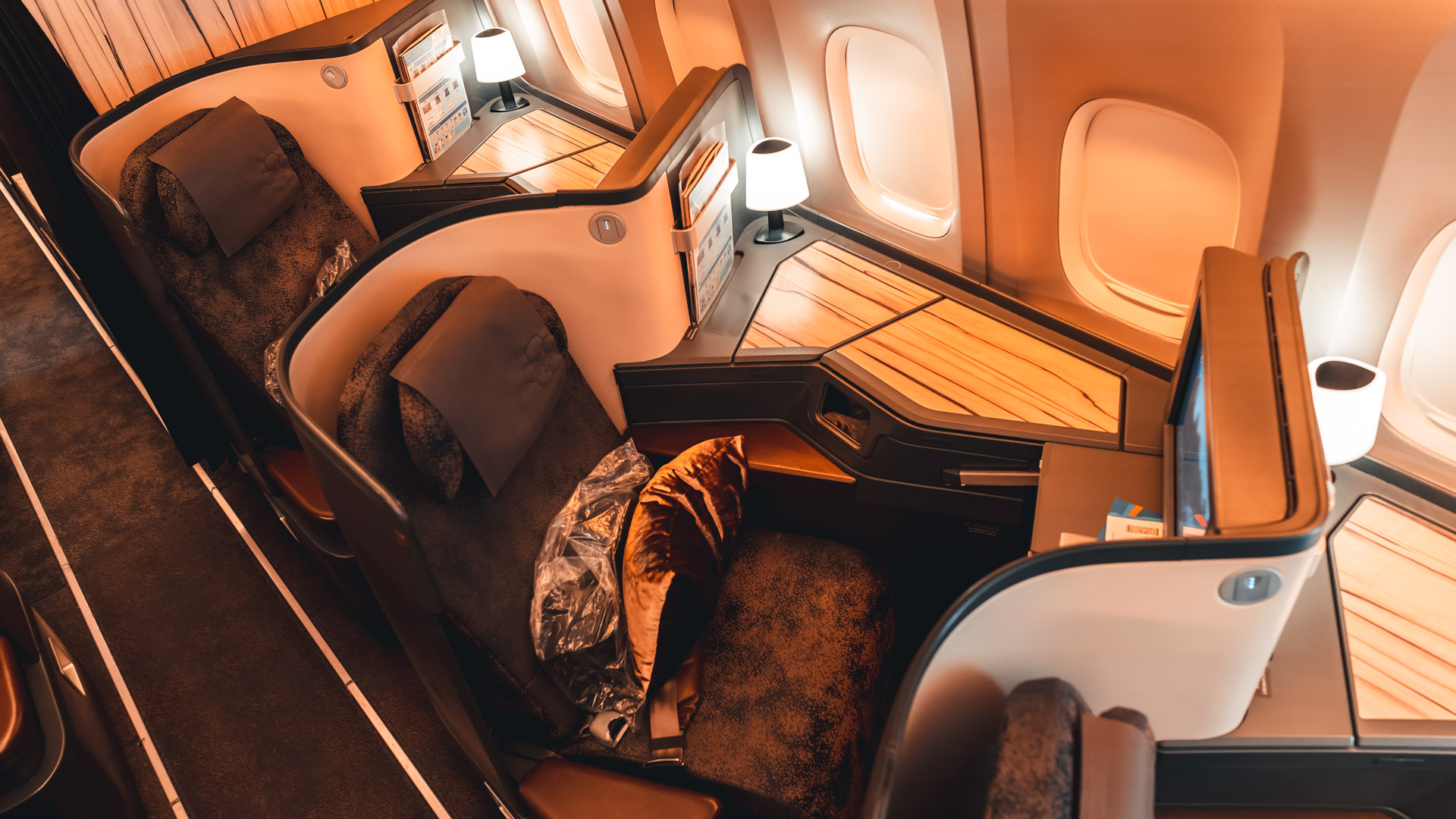
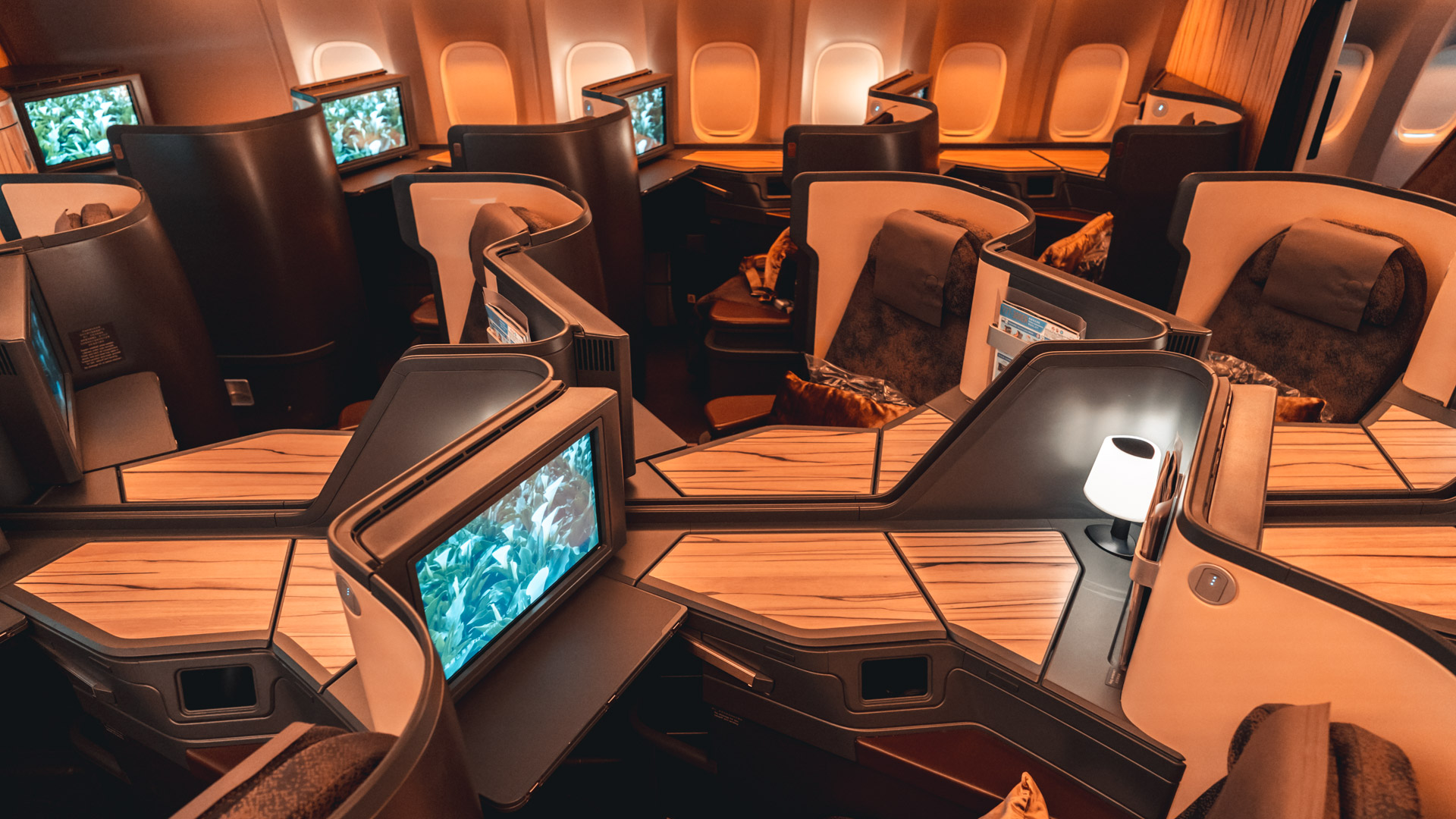
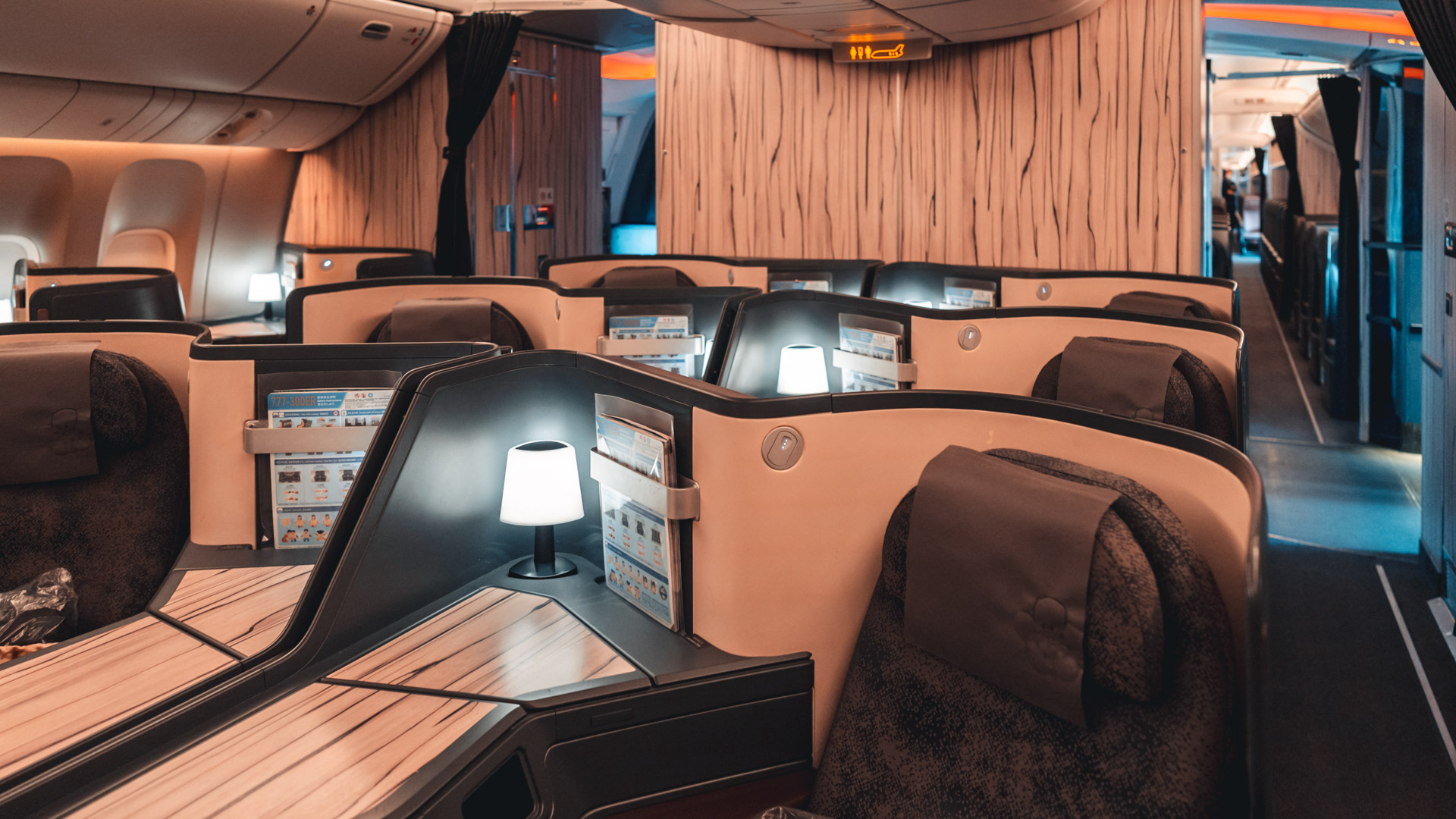
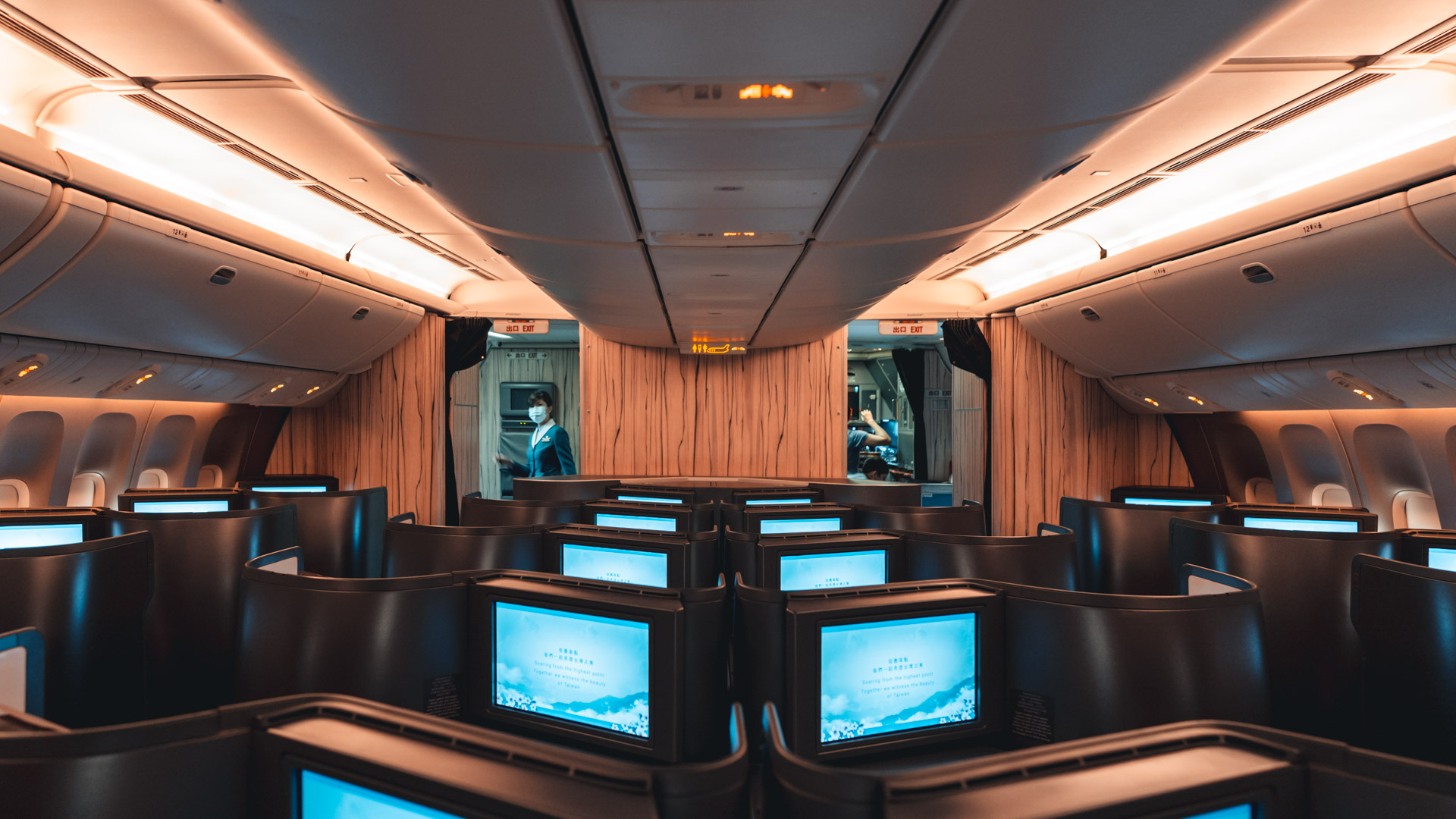
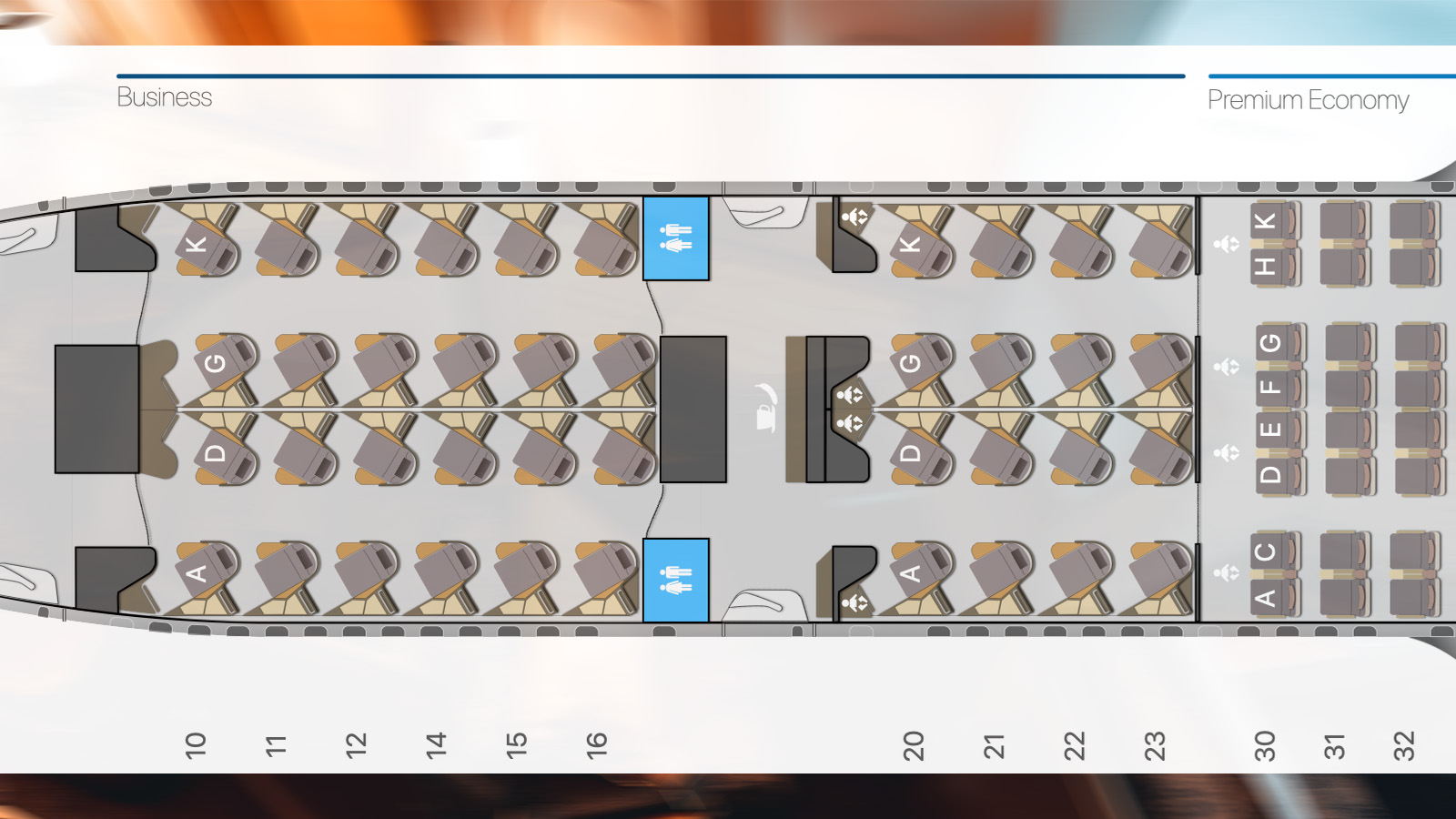
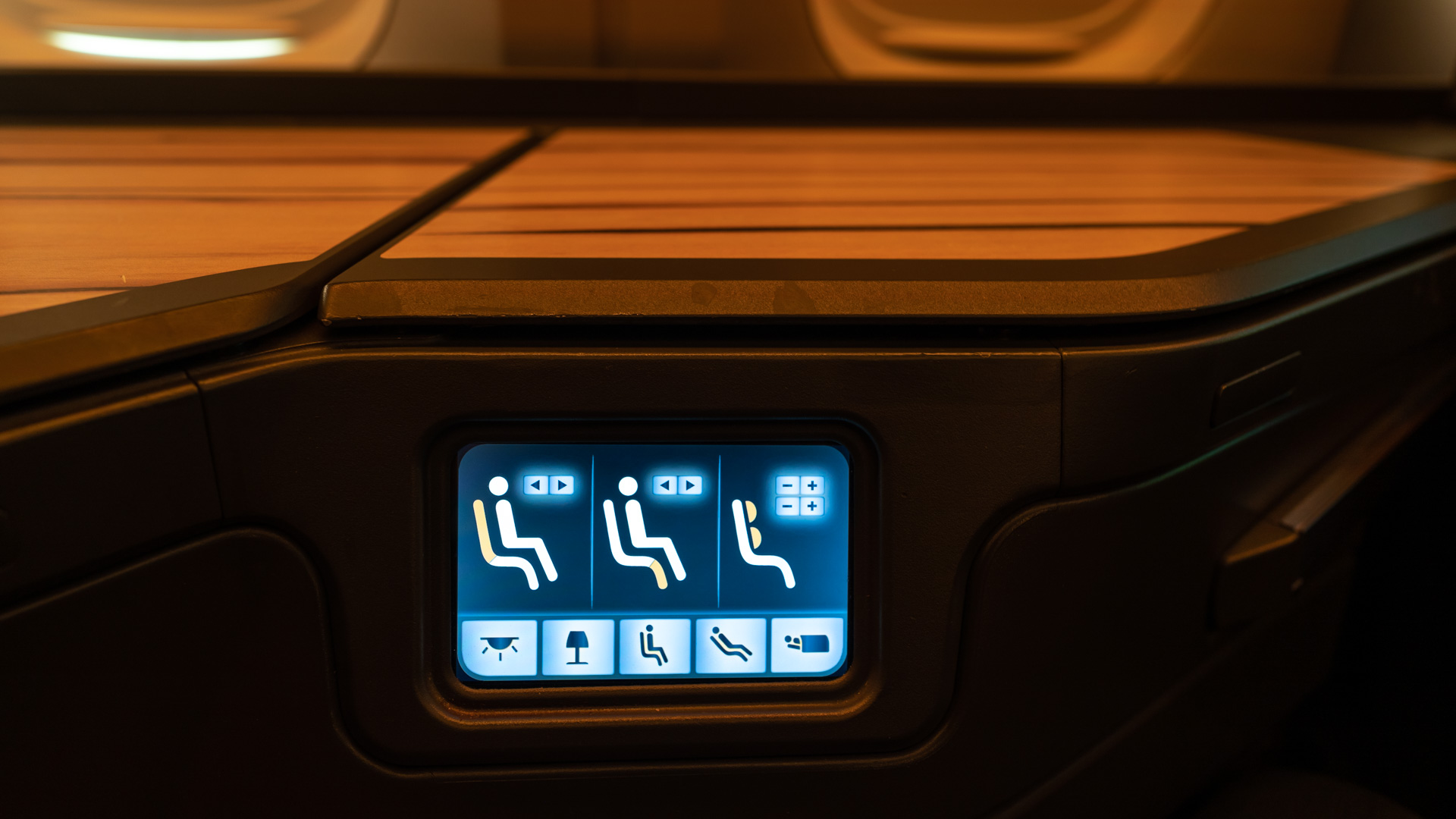
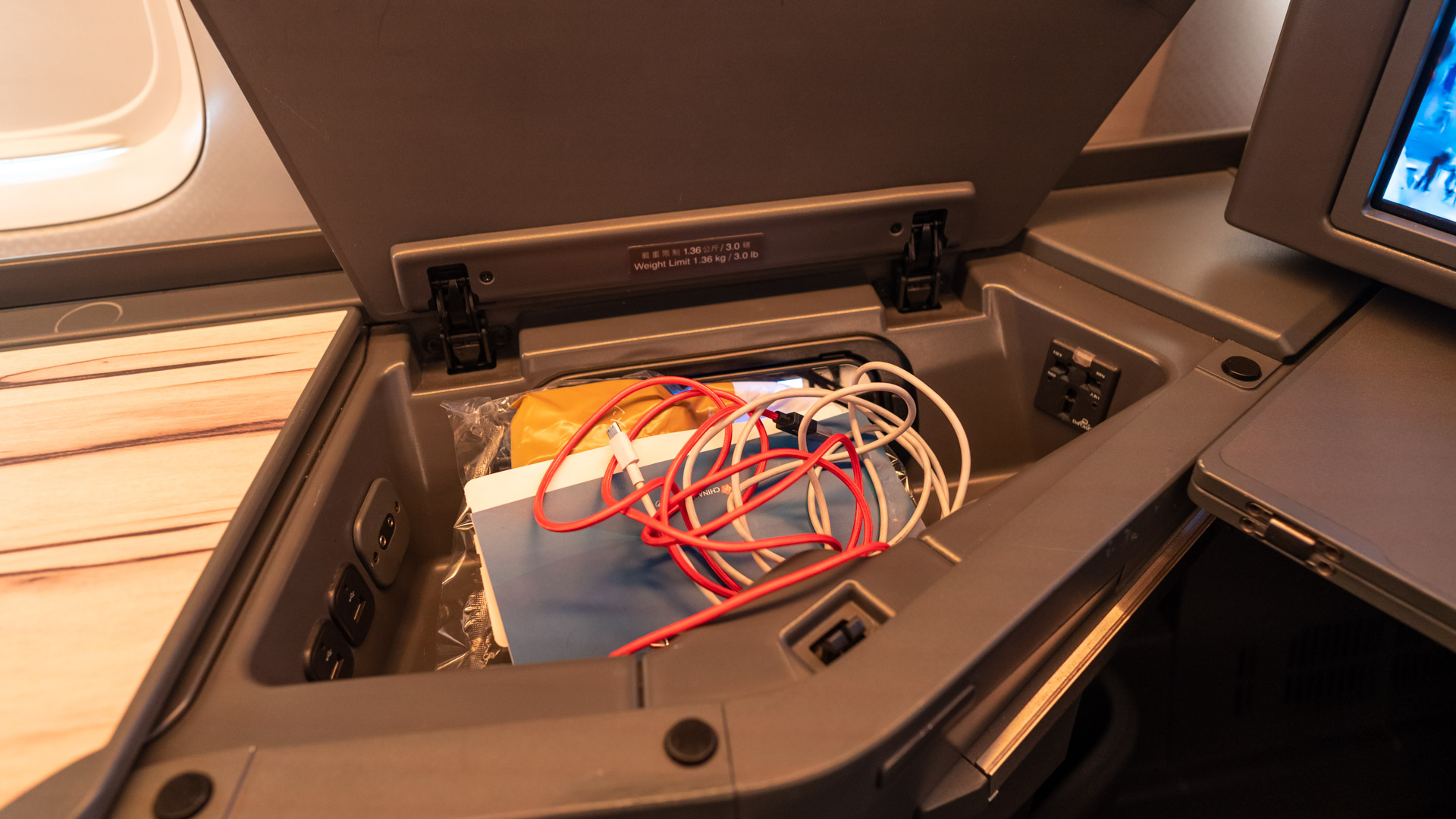
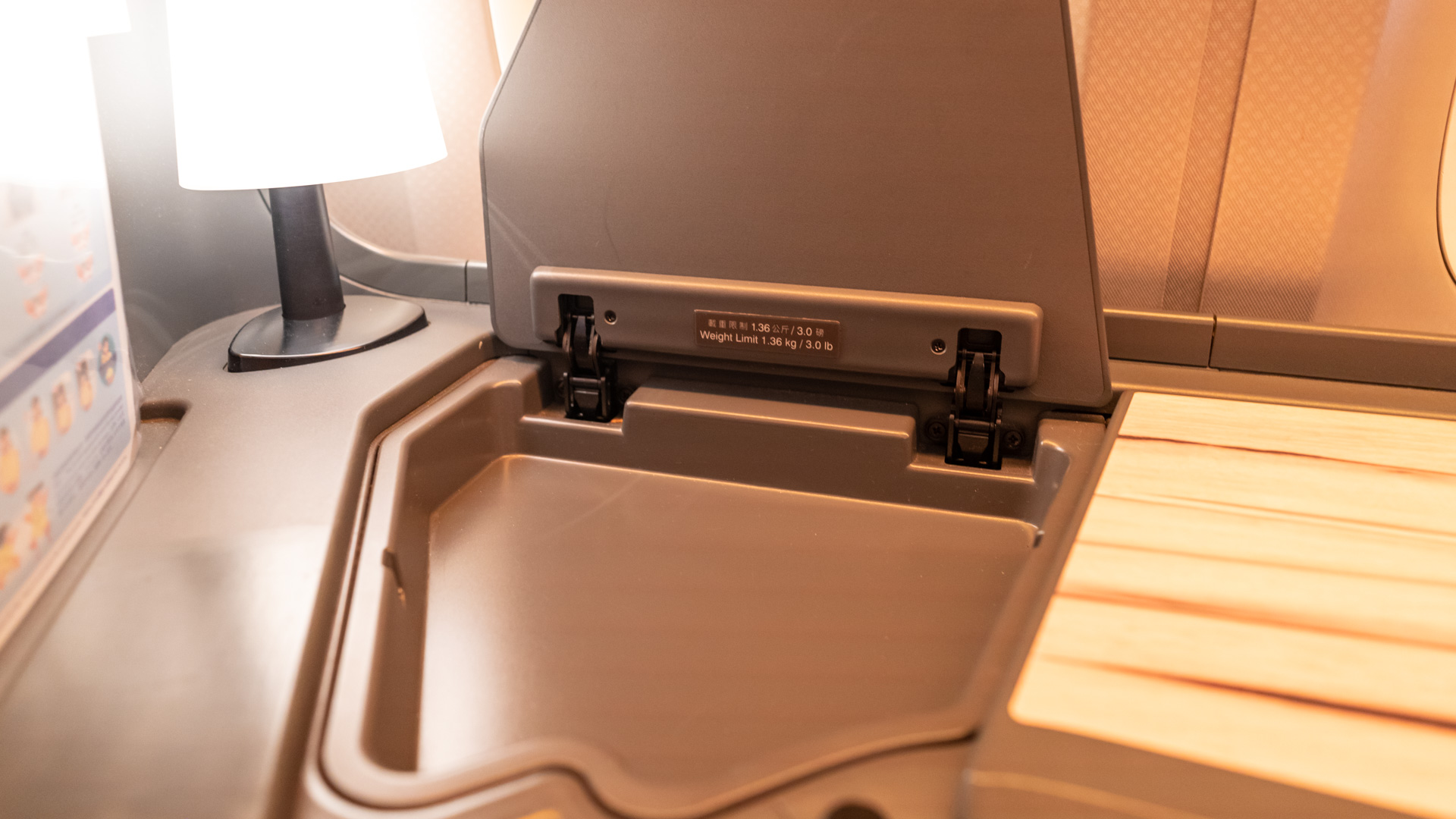
China Airlines Boeing 777 Business Class dining
I find it strange (in a very good way) that almost every major airline flying to and from Japan will have a dedicated Japanese menu – we don’t always see that with other countries. If you’ve read some of my previous reviews, you’ll know I’m thoroughly unexcited by breakfast, but will leap at anything remotely Japanese before you can say ‘omakase’.
Thus, it brings me great joy to see my 9:00 am flight is catered to lunch, and a very good one at that. Through the online pre-order system, I can already see the full menu and have no hesitation in locking in the Japanese ‘kaiseki’ set meal and its dizzying array of small bites.
Speaking of pre-orders, China Airlines boasts a formidable line-up of high-end restaurant tie-ups. Even on this short flight to Osaka, Business Class passengers can pre-order a vegetarian oriental meal from two-time Michelin Green Star winner, Yang Ming Spring. Or, as I do, lock in the Japanese banquet from the renowned restaurant, TOUTOUAN.
Before departure, the cabin crew come around with trays of juice or water. In my ideal world, that would also stretch to a bracing glass of Champagne, though its absence isn’t a make-or-break aspect to me. A simple water suffices instead.
But once we’re soaring in the skies, the real fun begins. In fact, the beautifully presented tray bearing my trove of delicacies appears just 30 minutes after take-off. Efficient service indeed. If you haven’t already, cast your eyes on the Japanese menu above. There are over 15 delicious tidbits, including sake-boiled abalone and smoked duck as standouts. If flying was always this tasty, I’d never want to get back on the ground.

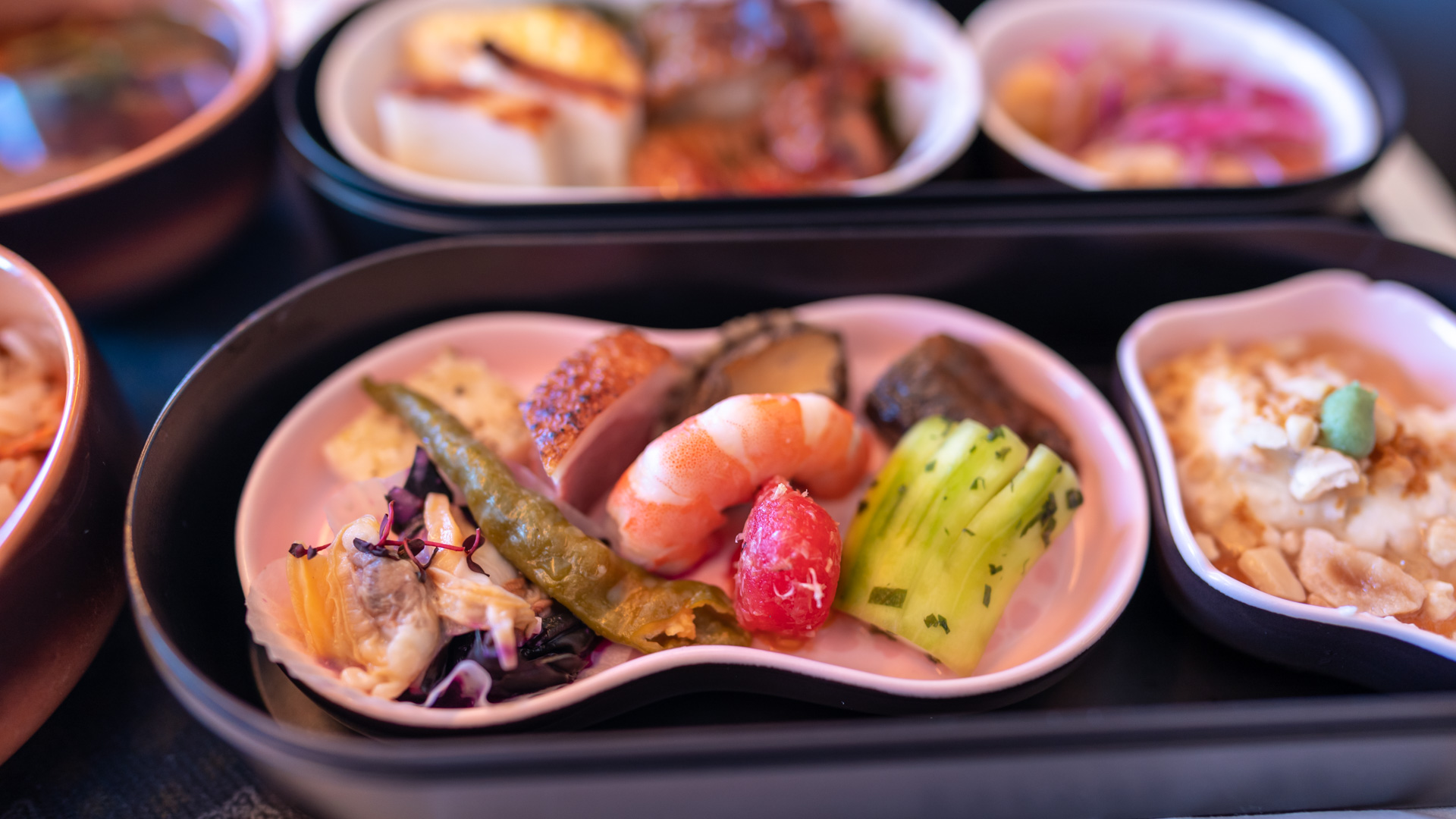
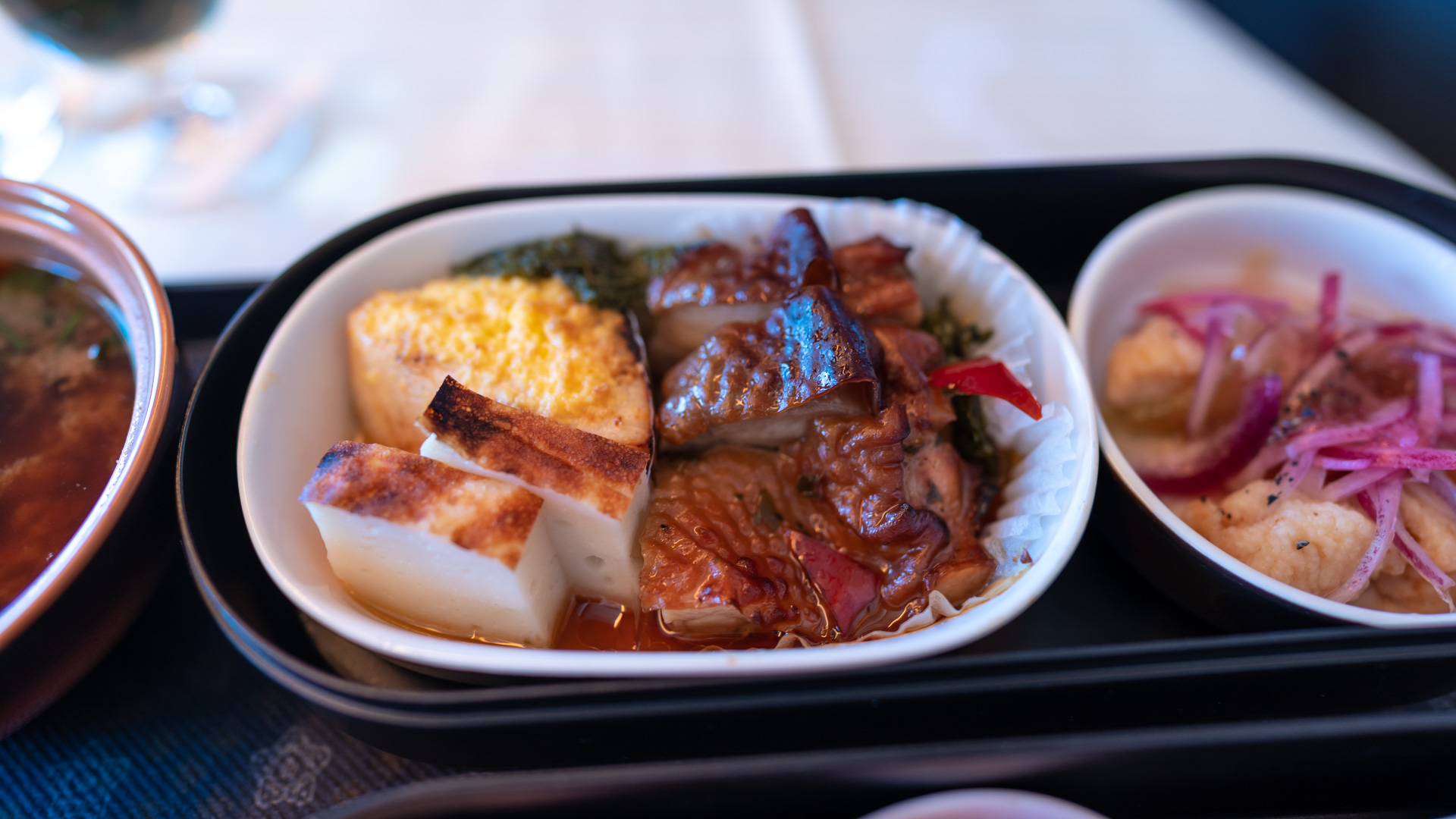


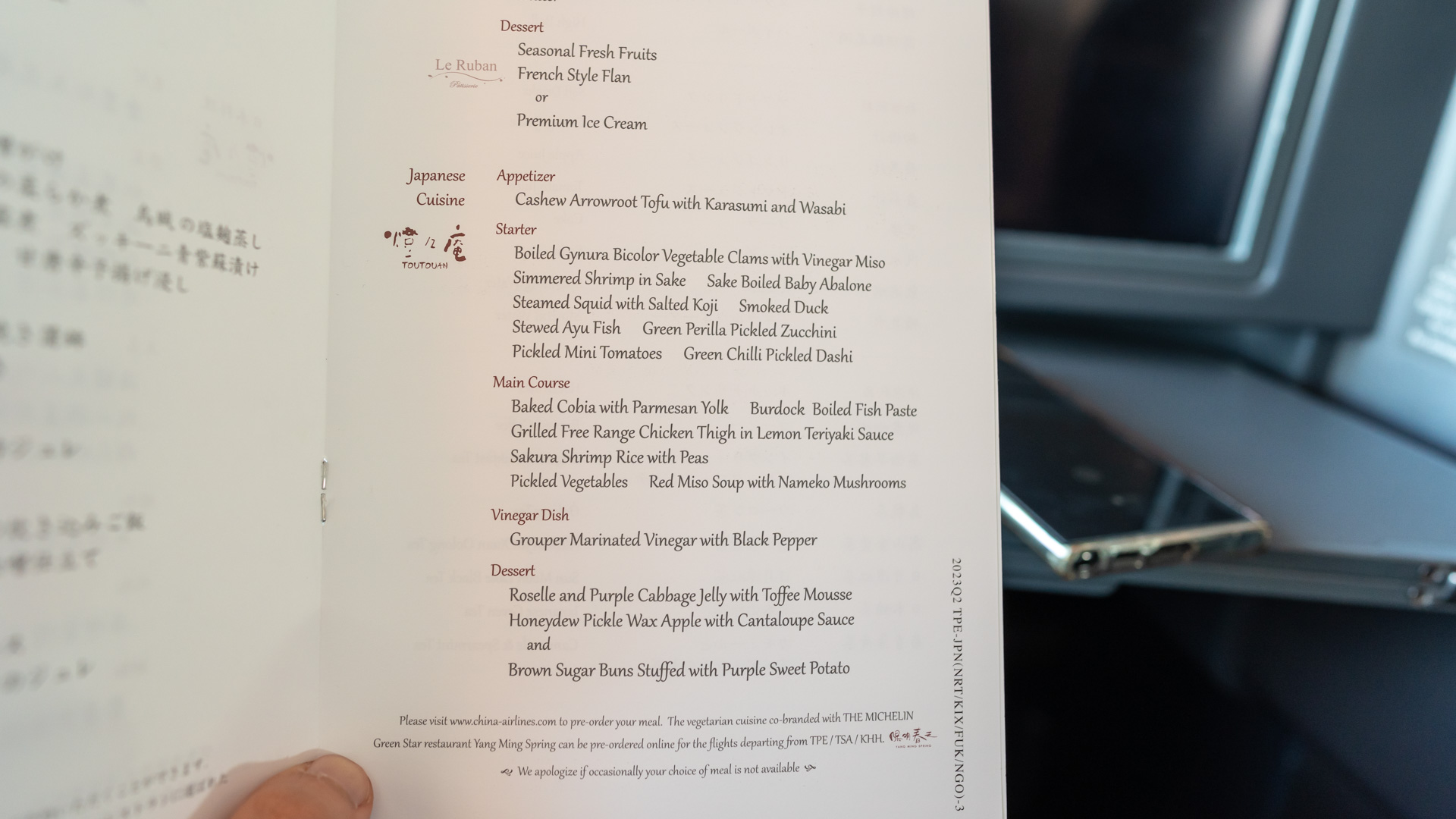
I don’t end up drinking much on this flight, as I’ve already been indulging over the last 12 hours. As with my previous flight, China Airlines stocks a vintage Piper-Heidsieck Champagne which is very good for Business Class. The menu also encompasses a small range of spirits and wines (not listed individually). But the tea selection is detailed and I finish off the flight with a warming oolong tea.
China Airlines Boeing 777 Business Class amenities
Although China Airlines’ Boeing 777 Business Class seats are an older version of the Airbus A350 seats, the differences are minimal. It’s got the same 18″ touchscreen, basic provided headphones, and a reasonable selection of content to watch. In fact, the 24-hour Wi-Fi package I purchased on the previous flight carries over and works on this flight as well. It’s not a surprise to me (I’ve read about it previously), but I’m still impressed that the system is seamless.
No amenity kit is provided on this flight, which is fair.
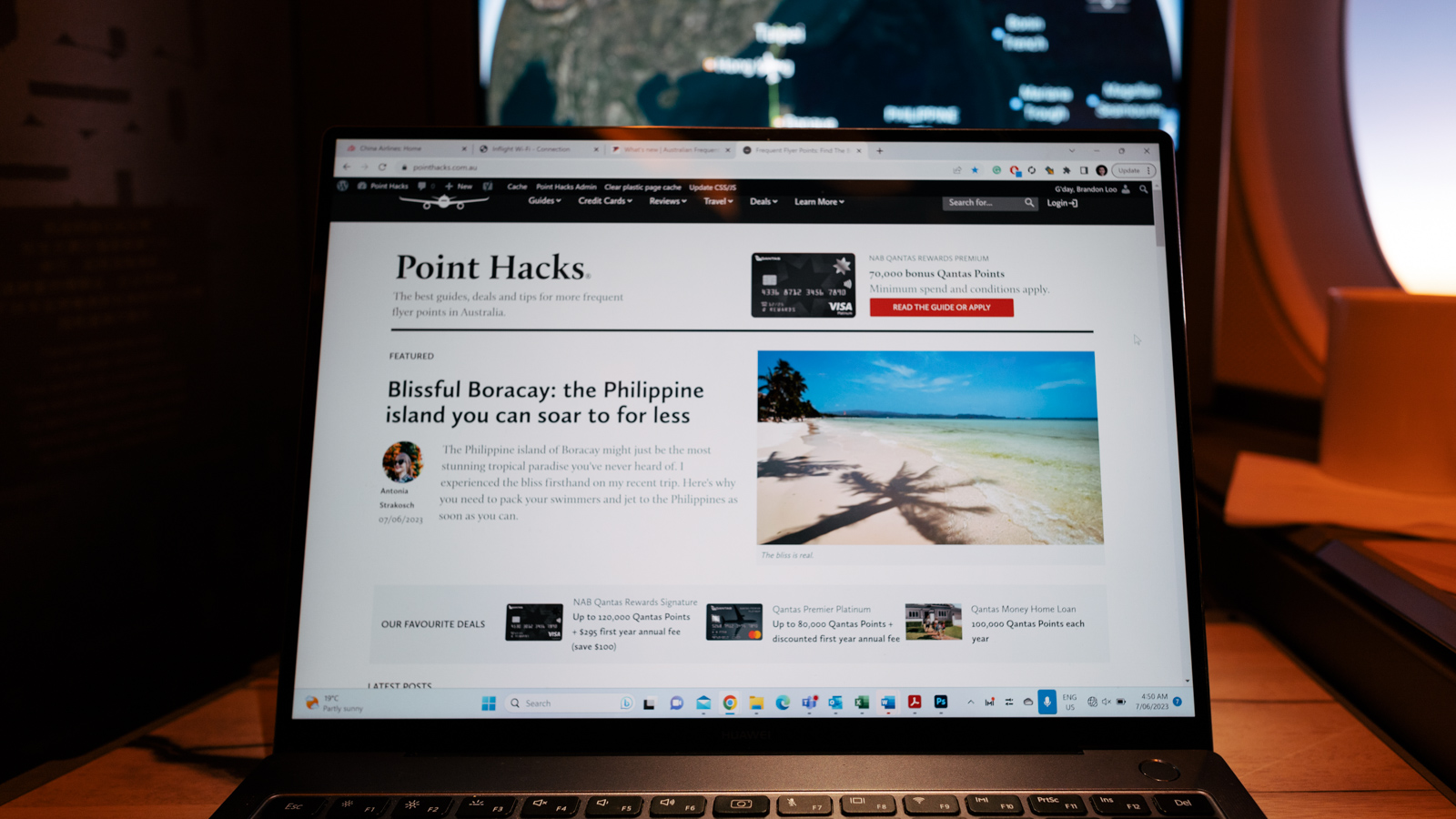
How to book this flight with points
China Airlines flights across the whole network are now available to book with Qantas Points. Simply load up your search on the Qantas website. If China Airlines reward seats are available, they will show. Point Hacks paid only 90,000 Qantas Points and AU$166 in fees and charges for my whole Sydney-Taipei-Osaka ticket – that’s only 15,000 points more than flying Sydney-Taipei.
If you’re booking this flight on its own, the cost doubles to 30,000 Qantas Points + around 1,305 TWD (AU$65) in fees and taxes, one-way. Still reasonable, but clearly, it’s better value to connect onwards from Taipei within 24 hours if your travel plans allow it.
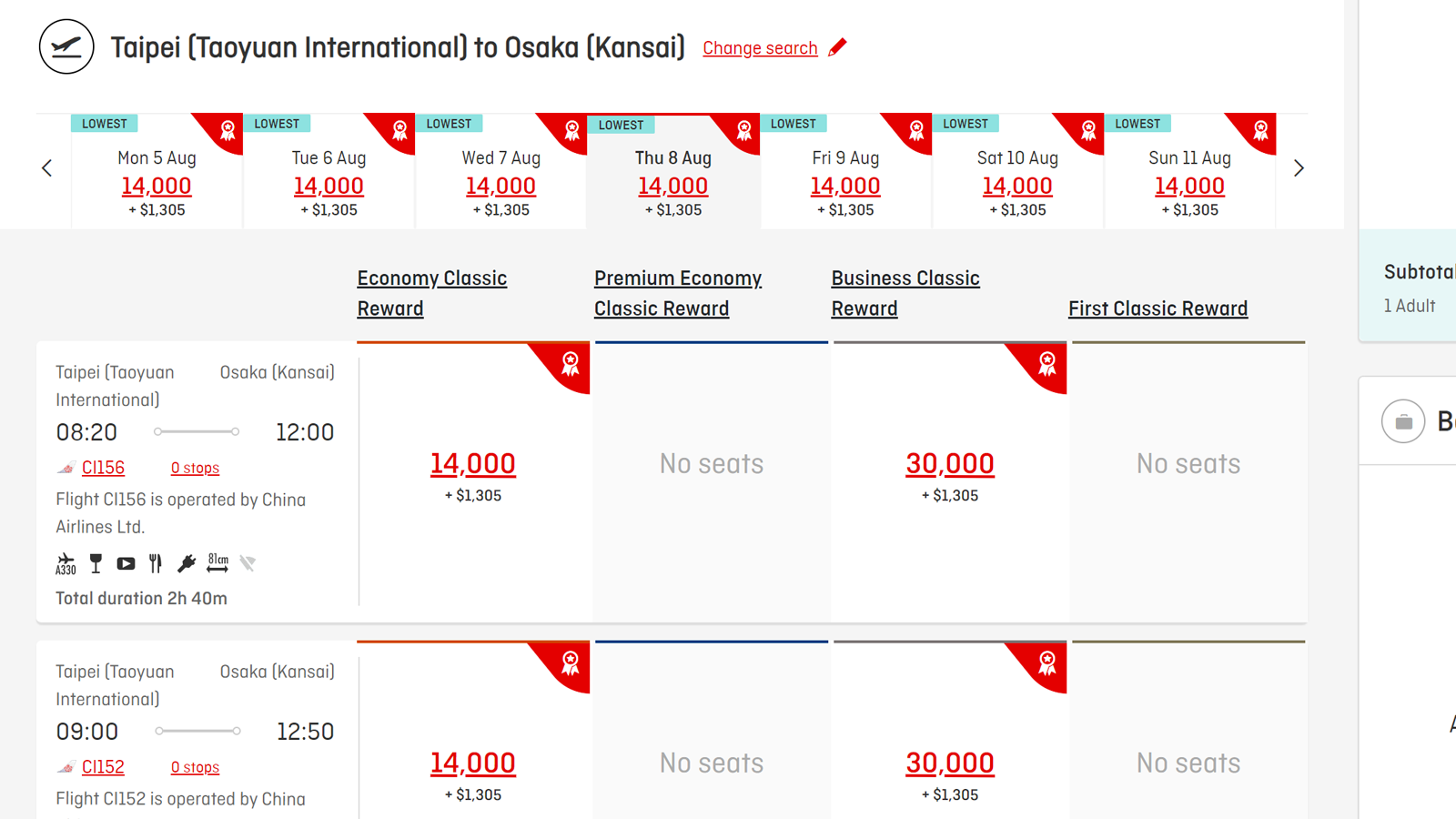
Like to analyse numbers? The cost of this flight is approximately AU$915 one-way when booked as a return. That gives your Qantas Points a maximum theoretical value of up to 2.83 cents each.
Summing up
China Airlines shows us just how good a relatively short international Business Class flight can be. Lie-flat seats and food that wouldn’t be out of place in a decent restaurant? It’s possible. I don’t have too much interaction with the crew, though there’s nothing wrong with their service, either. Even though this is a flight between two Asian countries, their service delivery in English is fine.
The flight is not completely flawless if I have to put my critical lens on, but on the whole, it’s an excellent experience and well worth the Qantas Points. The next time I fly from Perth to Melbourne in Business Class and tuck into my café-style chicken salad, I’ll think of China Airlines.
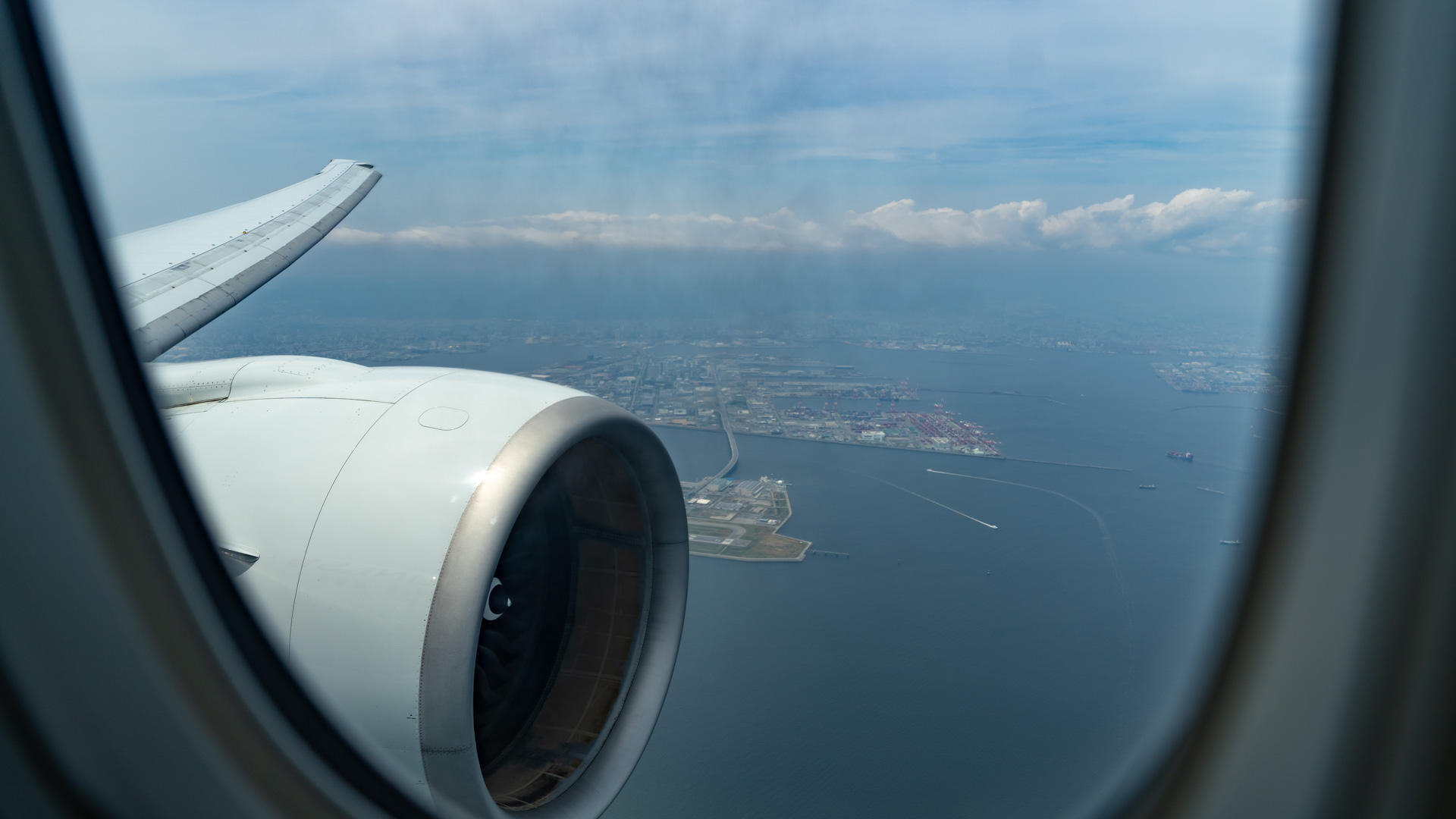
Photography by Brandon Loo, who travelled at Point Hacks’ expense.
Stay up to date with the latest news, reviews and guides by subscribing to Point Hacks’ email newsletter.

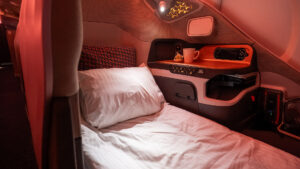
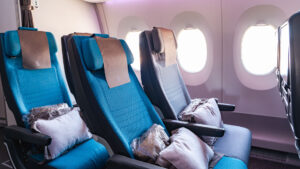
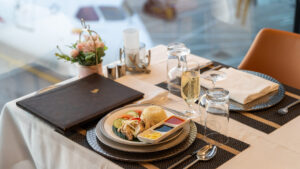



How did you book a meal using “online pre-order system”
For some reason CI site didn’t even let me pre-select the seats.
I’ve just booked exactly the same flight for April next year! A bargain, and I can’t wait to try out CI.
I also had no luck selecting seats using the app and the CI website. Apparently seat selection doesn’t open until 180 days out and it is a bit longer than that until we travel.
Although, the KIX-TPE route seems to be inconsistent in its use of the 777 and A330; the latter of which has a far inferior hard product. Any ideas as to how and when CI apply the 777 vs A330?
Anecdotally, other people have had success selecting seats and meals using the CI app or even through the Czech Airlines website (at least for seats).